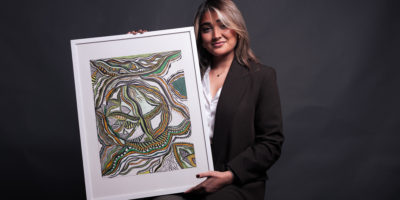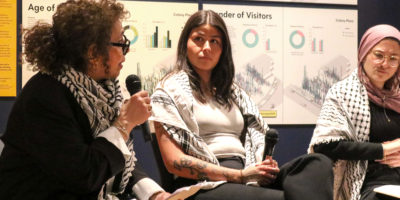By Ryan Silverman
Ryan Faubert knows all about sleep deprivation. Even now, as he stands outside the Image Arts photography lab, he wonders when he will be able to rest. It’s nighttime and Faubert, a second-year film student, is flipping through a stack of photographs that at first glance seem the same.
The photos are the results of a recent studio photo shoot. Ever glossy black and white picture is of the same young girl, smiling, laughing and playing with her hair.
This isn’t a class assignment. Faubert operates Faubert Photography. It’s his job to take and develop pictures, find and correct flaws, and deliver the best final product to clients within a few short days.
Faubert’s one-man business, which he formed seven months ago, has found success by filling a niche in the photo industry. Faubert uses his own materials and the equipment in the labs of the image arts building. Unlike most studio photographers, he only offers one product—black and white headshots.
While other Toronto photography studios charge between $180 and $300 for a 10-pack of 8-by-10 inch prints, Faubert can charge $110 because he doesn’t have to pay employees.
Faubert usually has about three clients a week, but when considering the number of hours he has to work after buying supplies, Faubert only earns about the same amount of somebody working at a minimum wage part-time job.
“Toronto is a huge metropolitan city, and so the competition between studios is really fierce,” Faubert says.
The result of this rivalry is that photographers sometimes have to accept any kind of work, Faubert says, which places them in situations they may not be experienced enough to handle.
“One day they might be photographing someone’s wedding,” he says. “And that’s fine, but then the next day they’re shooting nudes, and the day after that they’re maybe shooting product shots for a catalogue.”
Within this tangled web of studio competition and falling photographic standards, Faubert has found a niche in show business. By only doing headshots for people already in the business or trying to break into it, Faubert eliminates some of the problems other studios have to deal with are eliminated, he says.
Headshots are crucial for anyone in the entertainment industry, says Taryn Javier, a third-year Ryerson dance student. “That’s just how it is for students and professionals,” she says. “Looks are important—it is a visual art.”
Casting directors can sometimes be swamped with hundreds of applicants for one job, and the first thing they look at is a person’s headshots, Javier says.
“The whole idea behind the headshot,” Faubert says while re-evaluating his prints through a magnifying tool, “Is that it makes you look beautiful.”
And clients appreciate his efforts. “You should just see him in the studio, he’s just so easy to work with,” Tal Aronson, a second-year theatre student, says. She compares Faubert to a photographer she went to last year who kept her waiting for hours in a stuffy room reading 10-year-old fashion magazines. She was completely ignored by the photographer.
“When they finally acknowledged my existence, they were horrible to me,” Aronson says. The photographer was rude and barked commands at his stressed-out assistant, who quickly rushed Aronson out the front door after ten minutes in front of the camera.
“I hate to hear things like that,” Faubert says of Aronson’s experience. “Photography is supposed to be about beautiful art,” he says. “And I don’t see the art in taking advantage of people.”










Leave a Reply